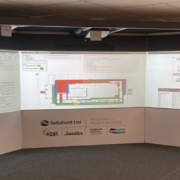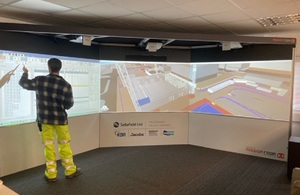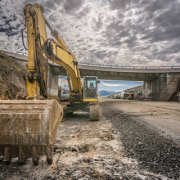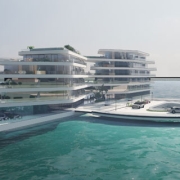It follows a competition that revealed several common planning challenges including community engagement, use of 3D and managing developer contributions more efficiently.
Pilot projects to explore the use of 3D, community consultation platforms and mapping tools in the planning process are being run by three UK local authorities following a competition to find planners with innovative ideas.
Nottingham City Council in the East Midlands, Dacorum Borough Council in Hertfordshire and South Ayrshire in Scotland will work with Esri UK, which ran the competition and will provide free consultancy and access to its geographic information systems (GIS).
Common challenges
The competition set out to explore how best to use geospatial technology to help modernise the planning process. It revealed several common planning challenges faced by local authorities, which are being addressed by the pilots, including the improvement of community engagement, how to maximise the use of 3D visualisations and how to manage developer contributions more efficiently.
Esri UK is also creating a Customer Advisory Board to help grow best practice use of GIS within planning.
Stephen Croney, head of sector for land, property and planning, Esri UK, said by combining each council’s domain expertise with its team of geospatial experts, the pilot projects will explore new and efficient approaches to problems designed to help make the planning process easier for everyone.
“It became clear that finding new ways of applying GIS in planning opened the minds of councils entering the competition as to what problems could be solved”
“Geospatial technologies can help shape the future of the planning process by delivering significant cost and time-savings,” continued Croney. “Spatial data provides the common language to join different data together and make it meaningful. Helping to understand the spatial nature of our environment so that we can better determine its future, means that more sustainable communities are created and helps with the levelling up agenda too.”
The Customer Advisory Board will provide a forum for local planning authorities to discuss best practice and share common problems and goals. Croney added: “It became clear that finding new ways of applying GIS in planning opened the minds of councils entering the competition as to what problems could be solved. The advisory board will help planning teams learn from each other, make better use of their investment in GIS and shape the future of digital transformation within planning.”
Selected from almost 50 entries, the winning applications are:
Dacorum Borough Council
Dacorum Borough Council wants to translate existing text and spreadsheets by using digital mapping to better manage and communicate infrastructure and developer contributions, secured through planning obligations.
“The objective is to use digital mapping to help with not only the decision-making around the planning of new infrastructure and make the whole process more transparent but also to support community engagement,” said councillor Alan Anderson, portfolio holder, planning and infrastructure at Dacorum Borough Council.
Our current system outputs are text and spreadsheet based – we believe that by providing this information in a spatial way it will provide a powerful asset which can be used by council officers and others for planning, decision-making and monitoring and also by the public to enhance understanding and engagement in infrastructure funding and planning.”
Nottingham City Council
Nottingham City Council’s proposition will explore how geospatial technology can help increase the use of 3D visualisations within the planning environment, internally and with the public.
“If 3D assessments are conducted in a GIS environment, planning teams will be able to conduct an assessment of various constraints on a site, at the same time as a visual assessment of the impact of the site. This will enable better and quicker business decisions and greatly contribute to modernising the planning processes as per the Government white paper,” explained Mick Dunn, GIS service manager, Nottingham City Council.
“The objective is to create a space to keep our community engaged and informed to strengthen our relationship with our stakeholders”
He added: “GIS will bring other capabilities to the process too, from in-depth flooding analysis to view analysis, which we would like to be able to share easily with interested parties. We feel this could be pushed even further, perhaps being able to provide VR (virtual reality) consultation on sites.”
South Ayrshire Council
South Ayrshire Council’s project will examine how an innovative community consultation platform with interactive methods of engagement can help further improve community involvement in Local Development Plans – the Proposed South Ayrshire LDP2, in the first instance.
“The objective is to create a space to keep our community engaged and informed to strengthen our relationship with our stakeholders, in order to reach better planning outcomes,” said Gordon Wilson, planning technician at South Ayrshire Council. “Effective public engagement can lead to better plans, better decisions and more satisfactory outcomes and it can help to avoid delays in the planning process, too.
“Our vision is to build on the work already done by South Ayrshire in creating its LDP2, developing new apps and information to create a local plan community engagement and consultation hub, which will be more accessible, as the majority of people are now online.”
Source: SmartCitiesWorld




 The BIM cave allows us to interrogate the design and look for potential conflicts, safety issues and scope review. It’s also a great visualisation tool for the team on site, as we can now work with them to catch issues with the design and show it on a larger scale rather than a single computer screen.
The BIM cave allows us to interrogate the design and look for potential conflicts, safety issues and scope review. It’s also a great visualisation tool for the team on site, as we can now work with them to catch issues with the design and show it on a larger scale rather than a single computer screen.








